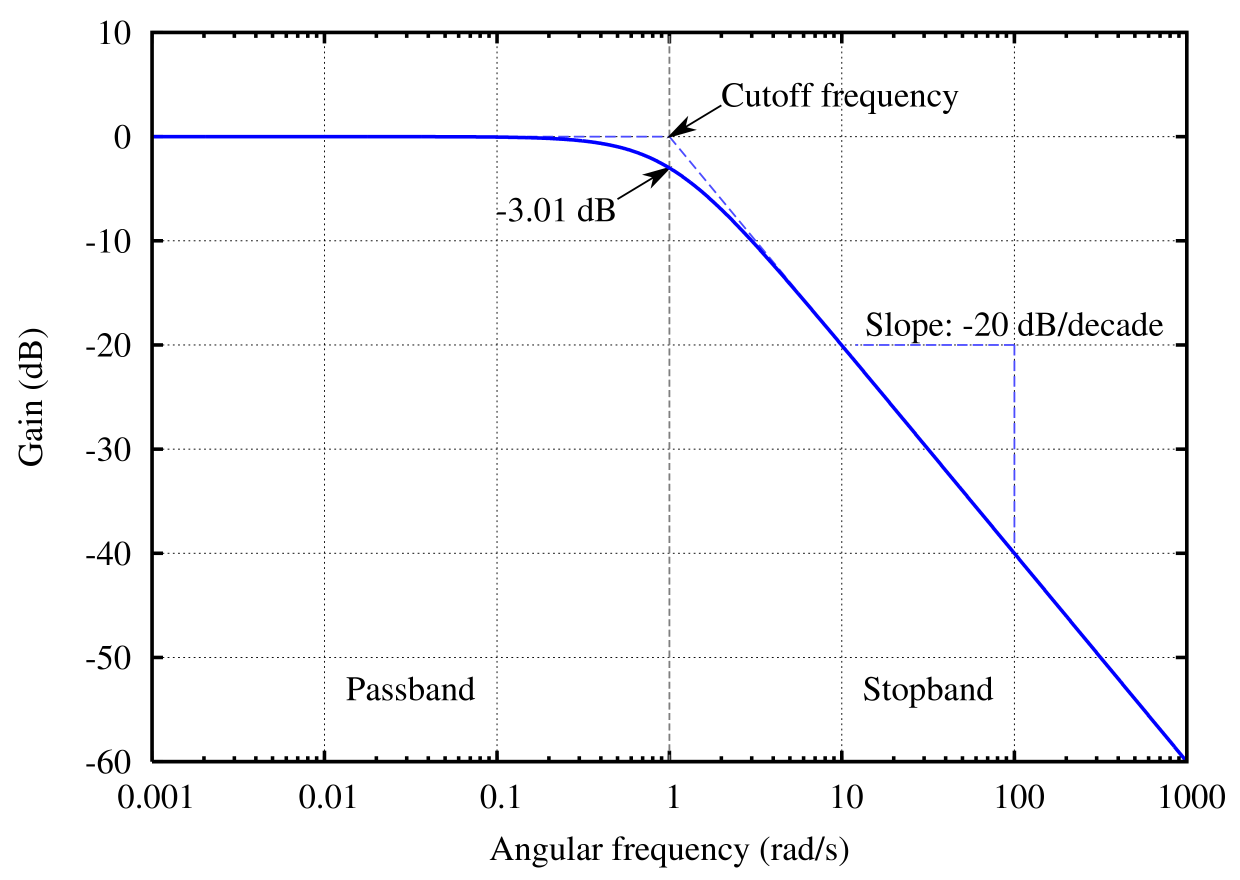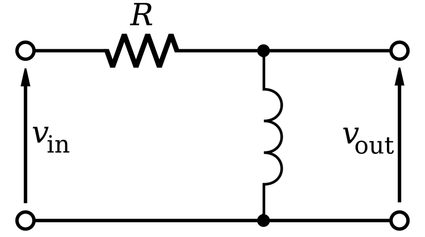How To Find Cutoff Frequency Of High Pass Filter
Omni's cutoff frequency reckoner allows you to calculate the cutoff frequency of various filter'south circuits. If you don't know what cutoff frequency is or how to calculate it, worry non! Read this commodity to empathise the definition and formula of the cutoff frequency. Y'all will too find an example of how to determine the cutoff frequency of a low pass RC filter circuit.
What is cutoff frequency? — cutoff frequency definition
The cutoff frequency or corner frequency of an electronic circuit is the frequency at which the output signal of the system starts reducing. More precisely, at the cutoff frequency, the ratio (Output power)/(Input power) attenuates by a factor of 1/2 or the voltage proceeds (Output voltage)/(Input voltage) attenuates past a factor of ane/√two.

To understand this permit us consider figure 1 which shows the voltage gain of a circuit over a wide range of frequencies. We can express the gain of the circuit in decibel as:
Proceeds (dB) = 20 log10 (Output voltage / Input voltage).
Initially, when the Output voltage = Input voltage:
Proceeds (dB) = 20 logten(1).Since logten(1) = 0 , we can write:
Gain (dB) = 0 At the cutoff frequency:
(Output voltage) / (Input voltage) = 1 / √2
Gain (dB) = 20 log10(0.707) = -iii dB
Every bit you lot can encounter, at the cutoff frequency, the gain of the circuit is -3 dB. Hence, the cutoff frequency is also sometimes known as -3 dB frequency.
Cutoff frequencies are important characteristics of any filter excursion. Before going any further, allow us kickoff effort to understand what a filter excursion is.
What is a filter excursion?
Filters are electronic circuits that allow certain frequencies to laissez passer through them and cake other frequencies. The 2 nigh ordinarily used filter circuits are:
- The low-pass filter; and
- The high-pass filter.
As the name suggests itself, a low laissez passer filter allows low-frequency signals (from 0 Hz to a cutoff frequency) to pass through and attenuates high-frequency signals. A high pass filter allows high-frequency signals (above a cutoff frequency) and impedes low-frequency signals.
It is worth noting that the output indicate is not completely blocked at the cutoff frequency, only gets more and more than adulterate as we move to higher frequency regions (see effigy one).
In the following sections, nosotros will hash out the corner frequency formula for these two types of filter circuits.
Formula for cutoff frequency of RC filter circuit
An RC filter circuit consists of a resistor (R) and a capacitor (C). Figure 2 shows the excursion diagram of a uncomplicated low pass RC filter. We know that the capacitive reactance (i.e., the resistance offered by a capacitor to the electric current flowing through it) is inversely proportional to frequency. Therefore, it will offer very high impedance at low frequencies, and we tin can consider the capacitor circuit as open up. This ways that Vout is equal to Vin at low frequencies. At higher frequencies, the capacitive reactance in very low and this results in a lower output voltage as compared to the input voltage.
The formula for computing cutoff frequency for an RC filter circuit is:
fc = 1 / (2 * π * R * C) Formula for cutoff frequency of RL filter circuit
Figure 3 shows a simple high laissez passer RL filter excursion consisting of a resistor (R) and inductor (Fifty). This excursion simply allows high-frequency signals to pass through. The inductive reactance (i.e., the resistance offered past an inductor to the current flowing through it) is directly proportional to the frequency of the signal. The inductor circuit offers high impedance to high-frequency signals, and hence tin can be considered as an open excursion. This means that Fiveout is equal to Vin at high frequencies. For low-frequency signals, it offers little to no resistance, and hence the voltage drop beyond it is negligible, resulting in a low output voltage.
The formula for calculating cutoff frequency for a RL filter circuit is:
fc = R / (2 * π * L) 
The corner frequency formula for high pass filter circuits and low pass filter circuits is the aforementioned.
How to calculate cutoff frequency?
Allow us summate the cutoff frequency of a low pass RC filter excursion consisting of a 10 thou Ω resistor connected in series with a 25 nF capacitor.
-
We can express the resistor and capacitor values every bit:
R = x * 103 ΩandC = 25 * ten-9 F. -
We can write the cutoff frequency equation for RC filter excursion as:
fc = 1 / (two * π * R * C ). -
Substituting the given values of resistor and capacitor in the above equation, we go:
fc = 1 / (two * π * 10 * 103 Ω * 25 * 10-ix F)fc = 636.6 Hz.
How to utilise the cutoff frequency calculator?
At present permit us work out the same trouble using our cutoff frequency calculator:
-
Using the drop-downwards carte, select the filter circuit type as RC.
-
Enter the value of resistance equally
10 kΩ. -
Type the value of capacitance equally
25 nF. -
The calculator will display the cutoff frequency (
fc), i.e.,636.half dozen Hz. -
Every bit the cutoff frequency formula of a high laissez passer RC filter is the same as that of a low pass RC filter, you lot can use this calculator for both.
FAQ
What is cutoff frequency in low pass filter?
The cutoff frequency of a filter is the frequency at which the magnitude of the output voltage signal drops past a cistron of seventy%. A depression pass filter allows frequencies between 0 Hz and the cutoff frequency to pass through and attenuates higher frequencies.
Why the cutoff frequency is taken at -3dB?
The decibel is a logarithmic scale expressed as xx log(Output power/Input ability). A -3 dB gain corresponds to an (Output power/Input power) ratio of 0.5, i.eastward., the output power of the excursion reduces past a factor of half. This serves every bit a standard reference for defining the purlieus in the frequency response of a system.
How do I determine cutoff frequency of low pass filter?
To make up one's mind the cutoff frequency of a low pass RC filter, follow these instructions:
- Multiply the value of resistance (
R), capacitance (C), and2π. - Divide the value obtained in the previous step by
1. - Congrats! You have calculated the cutoff frequency of a low-pass RC filter.
How to find the cutoff frequency of high pass RL filter?
To find the cutoff frequency for a high pass RL filter, go on every bit follows:
- Multiply the inductance value (
L) with2π. - Carve up the resistance (
R) by the value from footstep 1. - You take adamant the cutoff frequency of the high pass RL filter.
How To Find Cutoff Frequency Of High Pass Filter,
Source: https://www.omnicalculator.com/physics/cutoff-frequency
Posted by: cartertherly.blogspot.com


0 Response to "How To Find Cutoff Frequency Of High Pass Filter"
Post a Comment